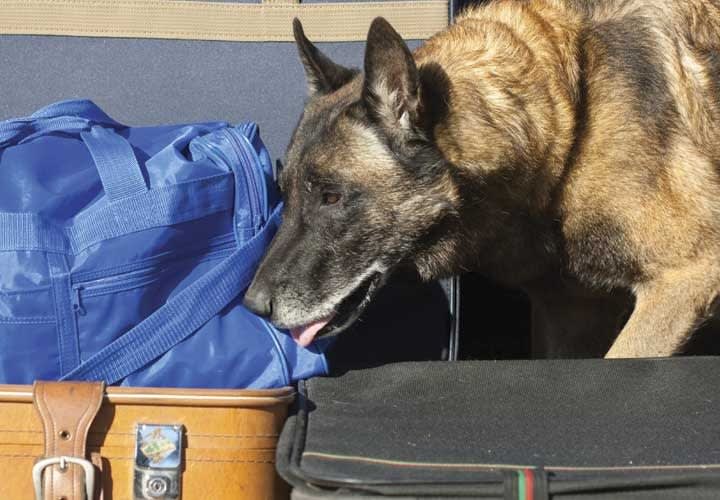More training requires a steady supply of substances for the dogs to sniff and alert to, which poses certain problems for agencies. Using real drugs and explosive materials requires special licenses, which can be expensive. For this reason some agencies use each other's narcotics and explosives for training purposes. But it can also be a logistical nightmare to safely store these supplies so that they can't cause harm or be stolen, and sharing among agencies complicates matters.
"In the DC metro area where I live, I see that more departments are getting a bunker to store their own explosives to not rely on another agency to provide training aids," says Matarese.
One solution to these problems is the use of pseudo scents, which mimic the odor of a narcotic or explosive. For example, the hydrogen peroxide-based explosive favored by such terrorists as the "shoe bomber" is extremely unstable, and thus very dangerous to use for training purposes. But K-9s need to know the scent so they can detect it in airports and elsewhere to protect the public.
"Scientists have developed a training aid that has the odor necessary to train the dog, but not the danger. There's no chance of it exploding," explains Jimenez. "It's something that we've needed for several years that they just came up with. We're currently using it in training."
This boon is not without its downside, however. Because pseudo scents are manufactured, they are not going to be exactly the same as a real drug or explosive. In fact, one of the issues with pseudo scents is that they always smell the same, which is great for consistency, but not an accurate portrayal of the full array of scents that can be found in, say, different formulations of cocaine that K-9s need to be able to recognize on the street. Using only simulated odors can be problematic, but even using both for training can pose problems in the courtroom.













